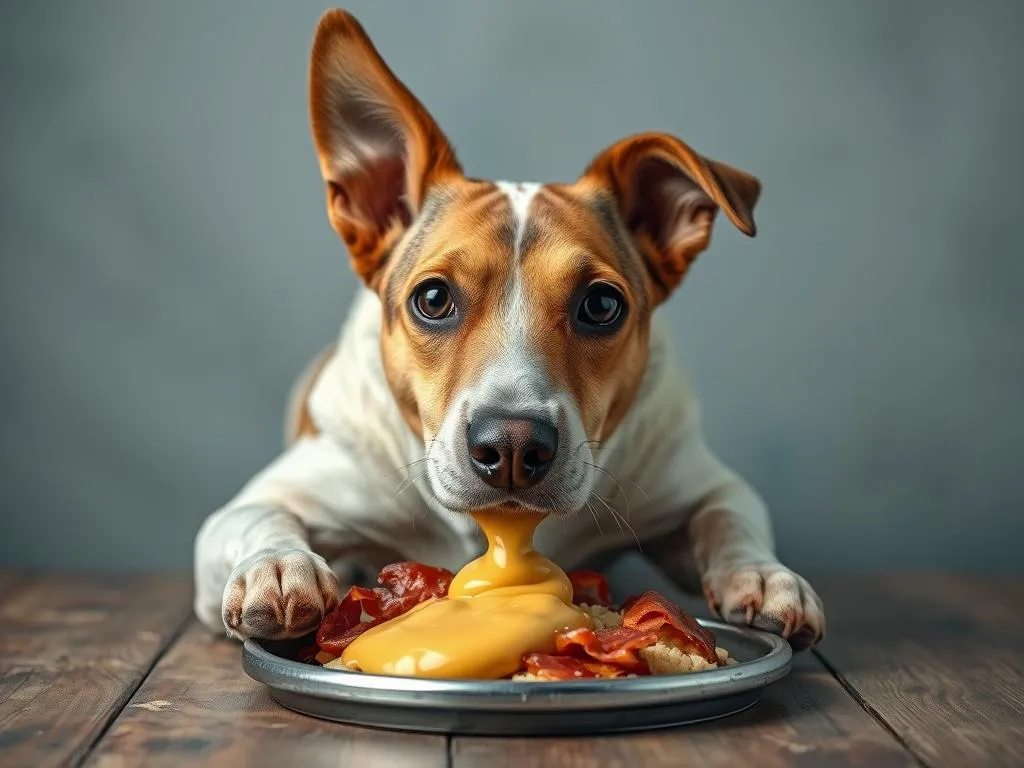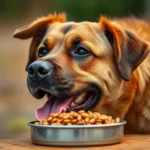
Introduction
When it comes to our furry friends, understanding dog nutrition is essential for their health and well-being. Just like humans, dogs require a balanced diet to thrive, which includes an appropriate mix of proteins, fats, carbohydrates, vitamins, and minerals. However, there are many misconceptions about what constitutes a healthy diet for dogs.
One topic that often arises among dog owners is whether they can enhance their dog’s food with bacon grease. This article aims to explore the use of bacon grease in dog food, providing evidence-based insights to help dog owners make informed decisions. So, can you put bacon grease on dog food? Let’s dive in.
Understanding Dog Nutrition
Nutritional Requirements of Dogs
Dogs are omnivores, which means they can consume both animal and plant-based foods. A balanced diet should include:
- Proteins: Essential for growth, maintenance, and repair of tissues. Sources include meat, fish, eggs, and legumes.
- Fats: Provide energy and help absorb certain vitamins. Healthy fats can be sourced from fish oil, chicken fat, and flaxseed.
- Carbohydrates: Serve as a source of energy and aid in digestion. Common sources are grains, vegetables, and fruits.
In addition to macronutrients, micronutrients such as vitamins and minerals are crucial for various bodily functions. The nutritional needs of dogs can vary significantly based on their life stage—puppies, adults, and seniors have different dietary requirements.
Common Ingredients in Dog Food
Commercial dog foods often contain a blend of meat, grains, and vegetables. Understanding the ingredients in dog food is essential for making informed dietary choices. Look for:
- Meat: High-quality protein sources should be listed as the first ingredient.
- Grains: Whole grains like brown rice or oats provide necessary carbohydrates and fiber.
- Vegetables: Ingredients like carrots and peas offer vitamins and minerals.
Reading food labels can help dog owners select products that meet their pet’s nutritional needs.
The Role of Fats in Dog Nutrition
Importance of Fats
Fats play a crucial role in a dog’s diet. They provide concentrated energy, support cell structure, and facilitate the absorption of fat-soluble vitamins (A, D, E, K). Additionally, essential fatty acids, such as omega-3 and omega-6, are vital for maintaining healthy skin and coat, reducing inflammation, and improving overall health.
Types of Fats
Understanding the types of fats is important for dog owners:
- Saturated Fats: Typically solid at room temperature, found in animal fats. While they are a source of energy, too much can lead to health issues.
- Unsaturated Fats: Usually liquid at room temperature and considered healthier. They can be found in fish oils and vegetable oils.
- Trans Fats: These are harmful and should be avoided in dog food.
Healthy fats can come from various sources, including fish oil, flaxseed oil, and chicken fat.
Bacon Grease: An Overview
What is Bacon Grease?
Bacon grease is the fat rendered from cooking bacon. It is often used in cooking for added flavor. While it can make food more palatable, its nutritional profile raises questions about its suitability for dogs.
Potential Benefits of Bacon Grease
One of the primary reasons dog owners consider adding bacon grease to dog food is its ability to enhance flavor, particularly for picky eaters. Additionally, it provides additional fats, which can be beneficial when included in moderation.
However, while it might be tempting to sprinkle bacon grease on your dog’s food, it’s important to weigh the benefits against the risks.
Risks of Adding Bacon Grease to Dog Food
Health Risks
While bacon grease can add flavor, its high saturated fat content poses several health risks:
- Obesity: Regularly adding bacon grease to dog food can lead to excessive caloric intake, contributing to obesity.
- Pancreatitis: Dogs that consume high-fat meals may be at risk for pancreatitis, a painful and serious condition.
- Sodium and Additives: Processed bacon is often high in sodium and may contain additives that are harmful to dogs.
Allergies and Sensitivities
Some dogs may have allergies or sensitivities to certain fats. Common signs of an allergic reaction include:
- Itchy skin or rashes
- Gastrointestinal upset (vomiting, diarrhea)
- Ear infections
If you suspect your dog has a food allergy, consult your veterinarian.
Expert Opinions on Bacon Grease for Dogs
Veterinarian Insights
Veterinary nutritionists generally advise against adding bacon grease to dog food. While it can improve taste, the potential health risks often outweigh the benefits. Many veterinarians recommend using healthier fat sources that are specifically formulated for canine diets.
Case Studies and Anecdotal Evidence
Dog owners have had varying experiences with adding bacon grease to their pets’ food. Some report increased appetite and weight gain, while others have seen health issues arise. A few success stories exist where dogs with poor appetites responded positively to the addition of bacon grease, but these cases are not representative of the broader population.
Alternatives to Bacon Grease
Healthier Fat Options
Instead of bacon grease, consider incorporating healthier fats into your dog’s diet. Some options include:
- Fish Oil: Rich in omega-3 fatty acids, promoting a healthy coat and reducing inflammation.
- Coconut Oil: Offers medium-chain triglycerides (MCTs) for energy and may improve skin health.
- Flaxseed Oil: A plant-based source of omega-3 fatty acids that can benefit your dog’s skin and coat.
These healthier fats can be mixed into dog food in moderation, ensuring your pet receives the necessary nutrients without the risks associated with bacon grease.
Homemade Dog Food Recipes
For those interested in preparing homemade dog food, here are a couple of simple recipes that include healthy fats:
-
Chicken and Rice
-
Ingredients:
- 1 cup cooked chicken (no bones or skin)
- 1 cup brown rice
- 1/2 cup carrots (cooked)
- 1 tablespoon fish oil
-
Instructions:
- Combine cooked chicken, rice, and carrots in a bowl.
- Drizzle with fish oil before serving.
-
Beef and Sweet Potato
-
Ingredients:
- 1 cup ground beef (lean)
- 1 cup sweet potato (cooked and mashed)
- 1/2 cup peas (cooked)
- 1 tablespoon coconut oil
-
Instructions:
- Cook the ground beef until browned.
- Mix in sweet potato and peas.
- Stir in coconut oil before serving.
These recipes provide a balanced meal with an appropriate amount of healthy fats.
Conclusion
In summary, while the question remains, can you put bacon grease on dog food?, the answer is nuanced. Its potential benefits, such as flavor enhancement, are overshadowed by significant health risks, including obesity and pancreatitis. Instead, consider healthier fat alternatives that can enhance your dog’s diet without compromising their health. Always consult your veterinarian when making significant changes to your dog’s diet to ensure they receive balanced nutrition tailored to their specific needs.









